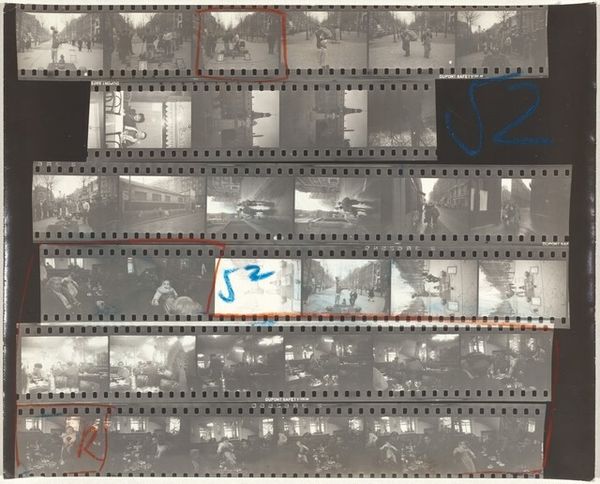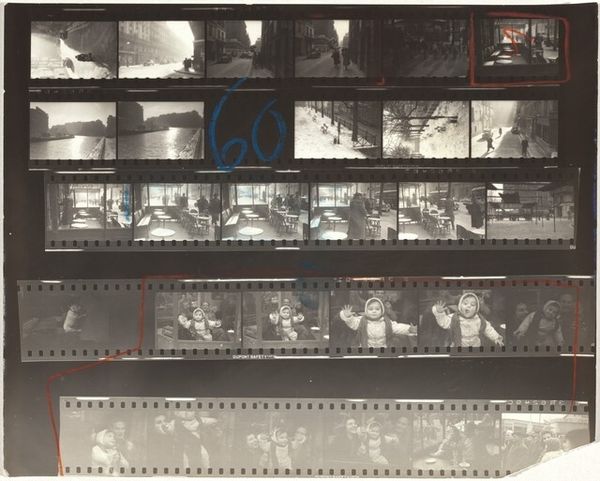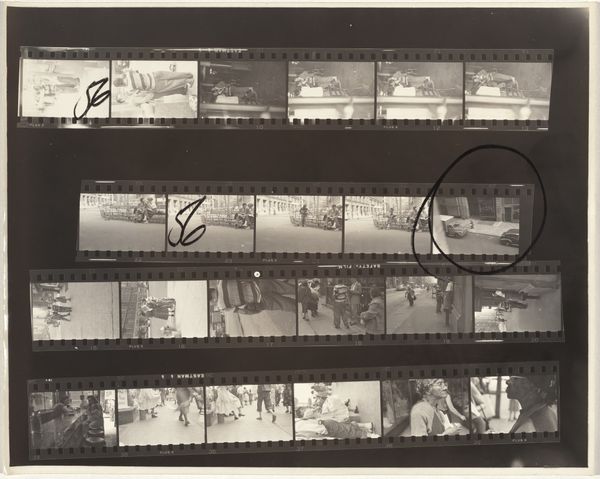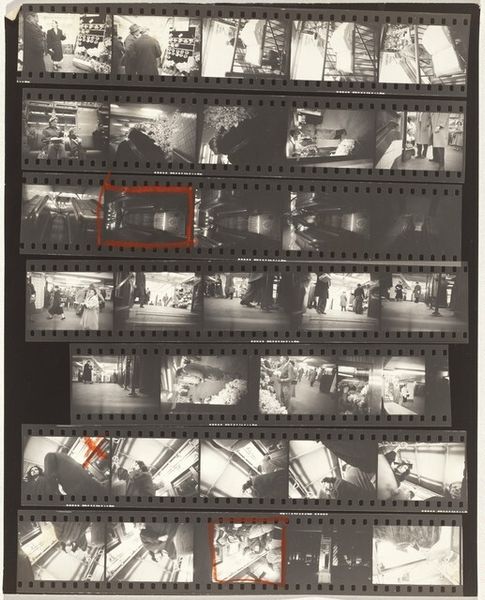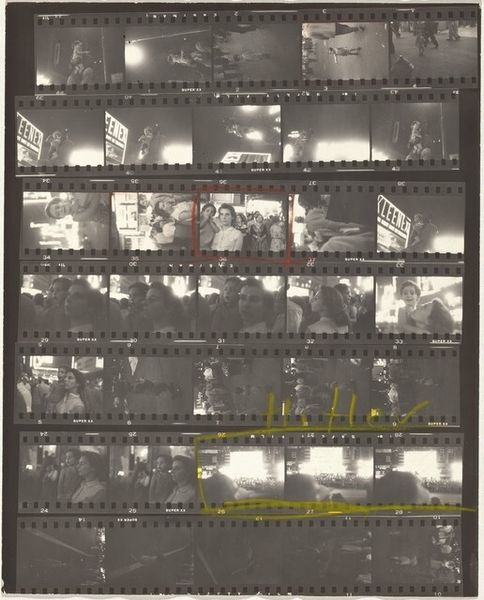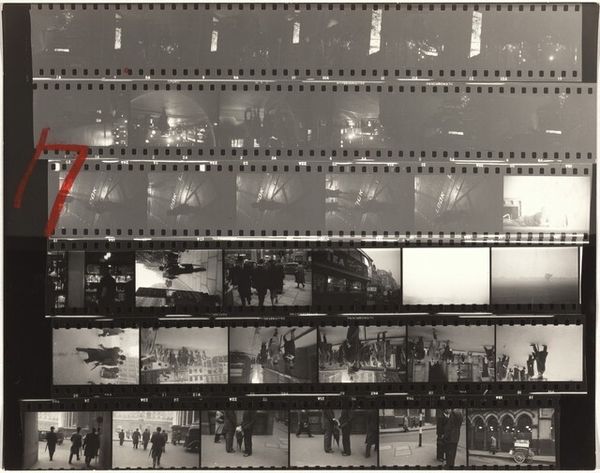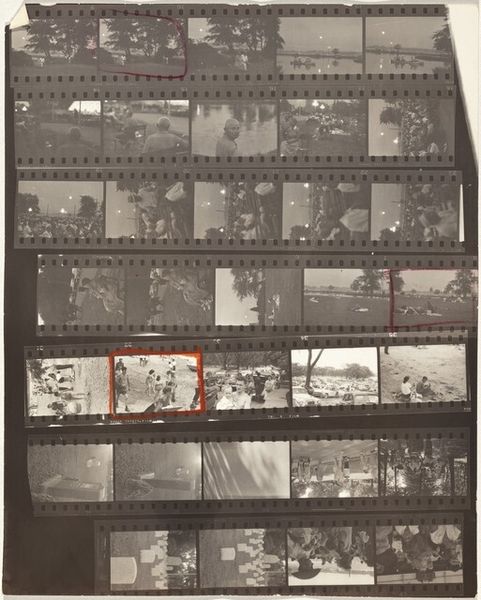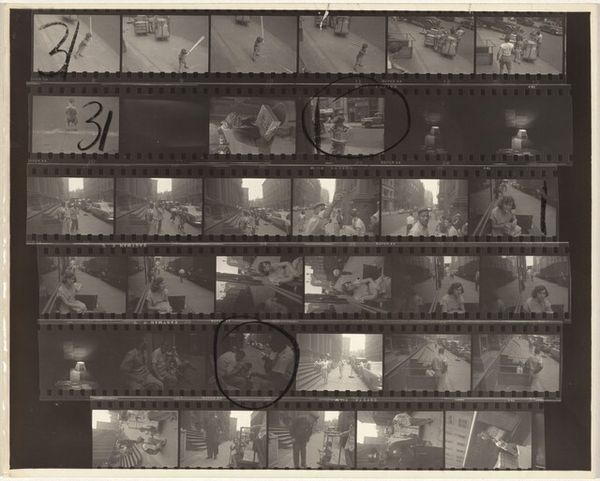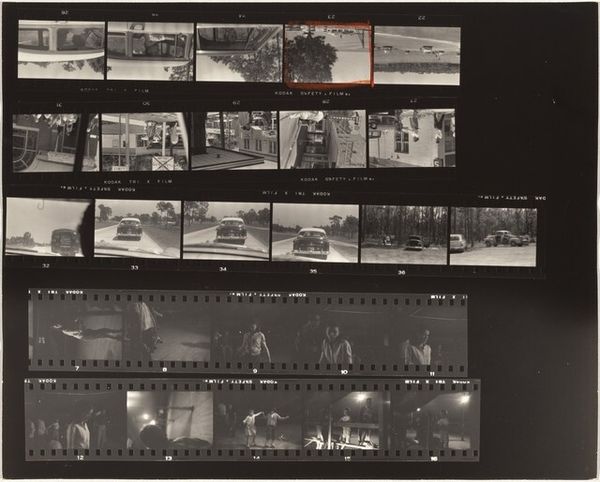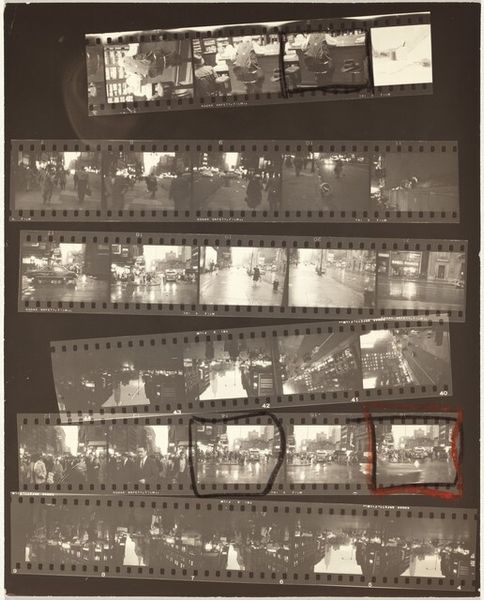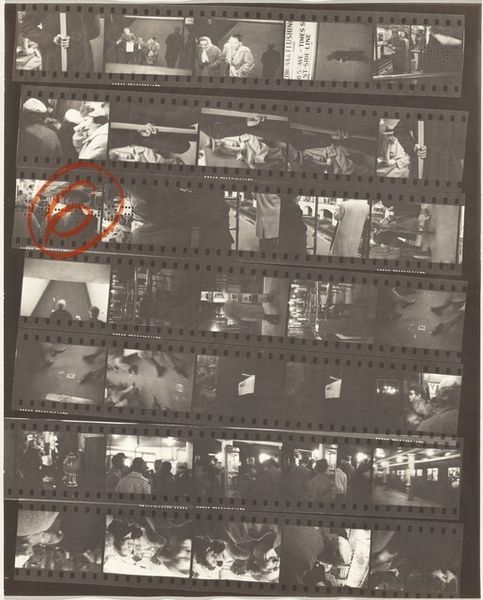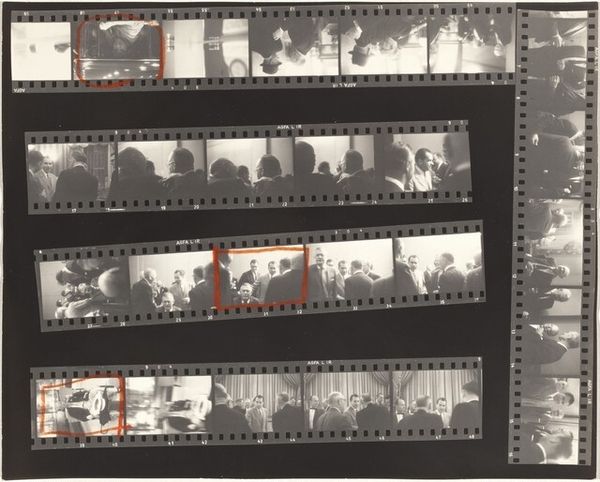
Dimensions: overall: 20.1 x 25.2 cm (7 15/16 x 9 15/16 in.)
Copyright: National Gallery of Art: CC0 1.0
Curator: This is "Paris 18B," a contact sheet of gelatin silver prints made by Robert Frank, likely between 1951 and 1952. Editor: It strikes me as a puzzle, a fragmented narrative held together by the grid of the filmstrip. A little melancholic, perhaps, given the gray tones. Curator: Well, Frank's work is often characterized by that very quality, a certain melancholy observation. Looking at the strips depicting a carousel, we could consider the history of the carousel itself as a symbol of cyclical movement, of fleeting moments of joy and the inevitable return to the starting point. How might this resonate with Frank's own experience as an immigrant in postwar Europe? Editor: Interesting, I'm seeing it now. Carousels often symbolize childhood, innocence, and even societal hierarchies – the higher you are on the ride, the "better" your experience. But presented in this serial, slightly detached manner, the joy feels... muted. Also, note the strip where rows of bare trees line up symmetrically on what appears to be a park or courtyard—trees can embody wisdom, as well as life cycles or family. The use of rows emphasizes regimentation. The presence of benches evokes shared spaces and experiences but there isn't any evidence of them being used. Curator: Right, it points toward a more ambivalent reading of post-war Parisian life. This series of gelatin silver prints does depict cityscapes as well as street photography so they definitely convey a critical image. The stark black and white imagery, a choice Frank made often, has implications here. He may be using it to draw a line between classes, and to expose poverty through unflinching images. What do you make of the overall selection presented in the frame? Editor: The choice of images on this particular sheet seems to deliberately juxtapose scenes of entertainment with more mundane aspects of city life—park benches, a water truck, even a car. There is a constant sense of transition. Perhaps this reflects Frank's own outsider perspective, a continuous observation of contrasting moments within Parisian society. Curator: It underscores the complexity of identity. These aren't isolated moments but fragments of a broader story, interconnected by the very act of seeing and recording. It leaves me pondering how we make sense of the world through curated collections of images, just as Frank has done here. Editor: For me, the sequence reveals how seemingly random observations accrue meaning over time. A beautiful representation of culture’s many influences, which make symbols live and persist in our memories.
Comments
No comments
Be the first to comment and join the conversation on the ultimate creative platform.
